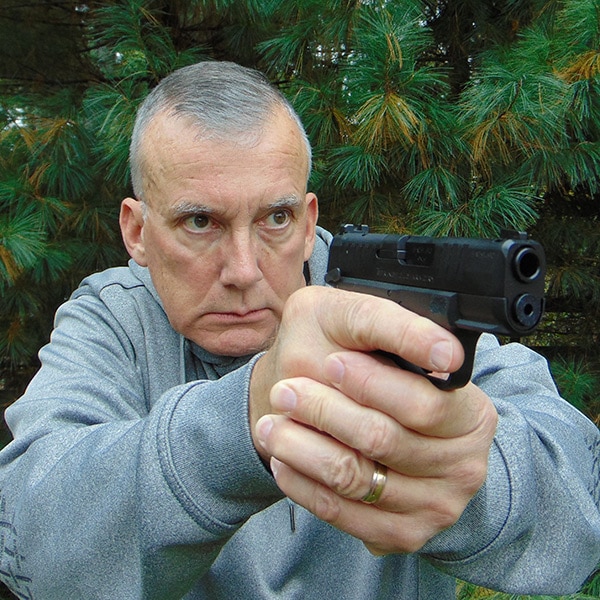Facing the Unthinkable: Is Your Church Safe From an Attack?
February 20th, 2024
9 minute read
Editor’s Note: This article touches on subjects that include carrying firearms and places of worship. Research all federal, state and local laws on this topic. Nothing in this article should be considered training guidance or legal advice. Seek out the services of qualified legal professionals if you have any doubts about the laws, and obtain quality training in the handling and use of your firearm. The opinions expressed in the article are those of the author.
I did not carry an off-duty gun to church for the first 21 years of my law enforcement career. I grew up in a time when I believed people didn’t dare desecrate a church or steal from it. Even if there were people who didn’t believe in God, they believed just enough so as not to risk offending the Almighty himself — just in case. Back then, I had little real fear I would ever need to draw a handgun to protect my church during worship.
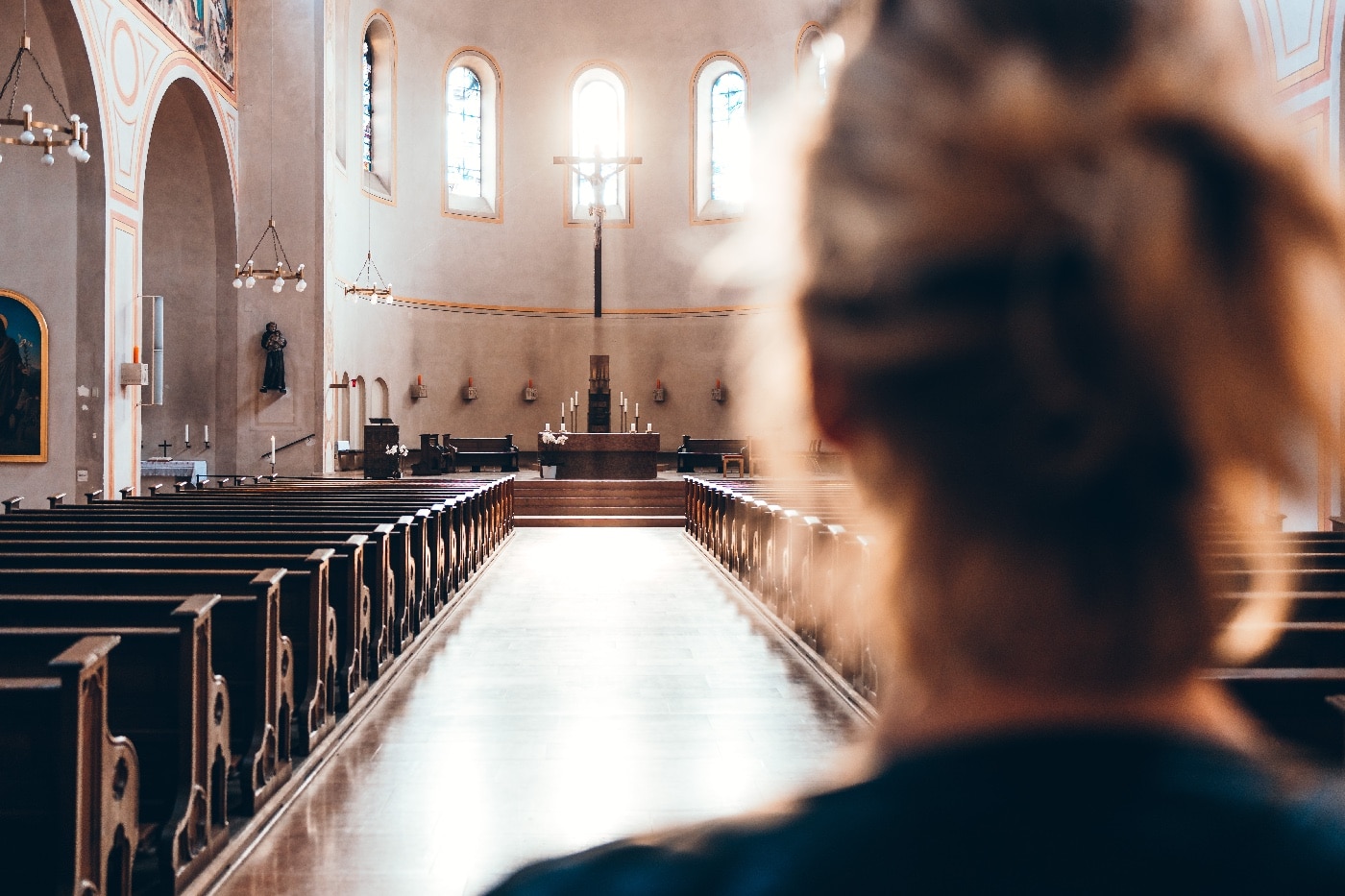
My perception has changed in the years since, with recent events reinforcing that unfortunate fact. As a result, I now carry my off-duty gun in church — usually a minimalist handgun. Those smaller guns seemed to be enough, and not enough had happened to cause me to feel the need to carry a more capable handgun.
Fast Forward to Now
I never imagined times would be as dangerous as they are now. I also never imagined that there would be such widespread hatred directed against Christianity and Judaism by so many people in so many horrific ways.
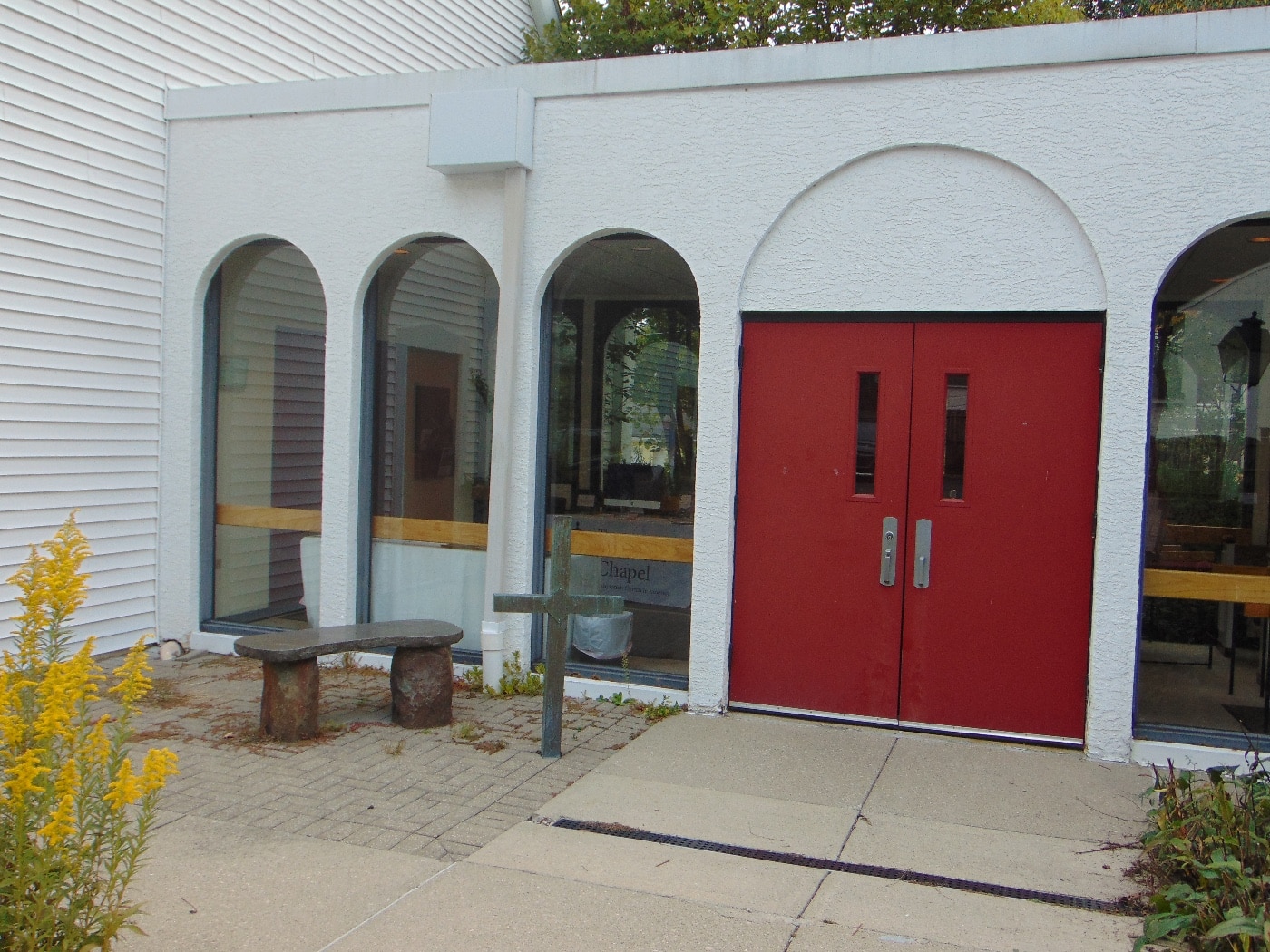
These threats have led to greatly increased concern among church members and school staff. I know of a number of members of the churches we attend who carry lawfully concealed firearms. They all want to do their part to protect their fellow congregants, but there are some considerations that must be understood before undertaking such a serious endeavor.
Legal Considerations
Carrying a handgun in a church begins with understanding your state laws. When concealed carry laws passed in Ohio where I live, our statehouse didn’t copy and put into place what was successfully occurring in Florida — they more or less decided to reinvent the wheel — making Ohio’s “Shall-Issue” Concealed Carry law different than the statutes in other states.
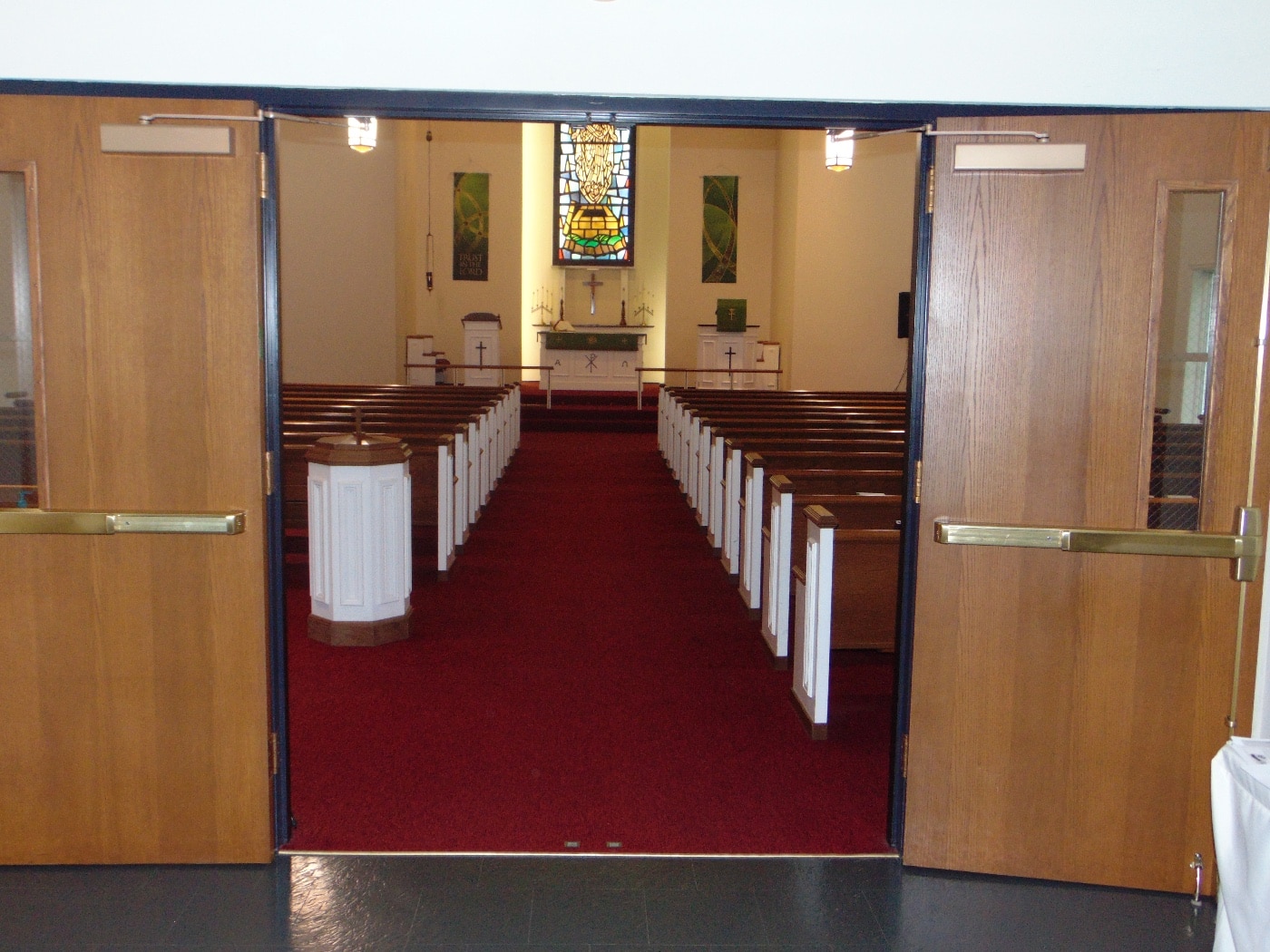
One of these differences involved concealed carry permit holders carrying their firearm in a church. Ohio’s original version of the permit law allowed carrying an otherwise lawfully held firearm in church, but only if there were signs on the church saying it was ok to do so. I’ve never actually seen a sign like this at any Ohio church I’ve been to.
Fortunately, the law has been amended to now read “Places of Worship (are prohibited) unless the place of worship permits otherwise”. So, a sign is no longer needed, but permission from the pastor is. Again, this is our situation — be sure to fully understand the laws in your state.
Next Steps
Once approval is obtained, the next step is handgun selection. A simple formula for the selection of a church defense handgun will assist you in choosing wisely. That formula is PPR. Precision, Power and Reliability. Here is how each part of the formula should be understood:
- Precision. Your handgun needs to be the most accurate one that you can possibly obtain. Generally, this means a full-sized handgun. A high level of precision is required because you might be forced to shoot within a densely packed area. Good sights on your church defense pistol are also essential.
- Power. Power is a difficult balance. You need to choose a chambering and load that is decisive enough to put an end to the attack, but not too powerful to risk overpenetration in the target.
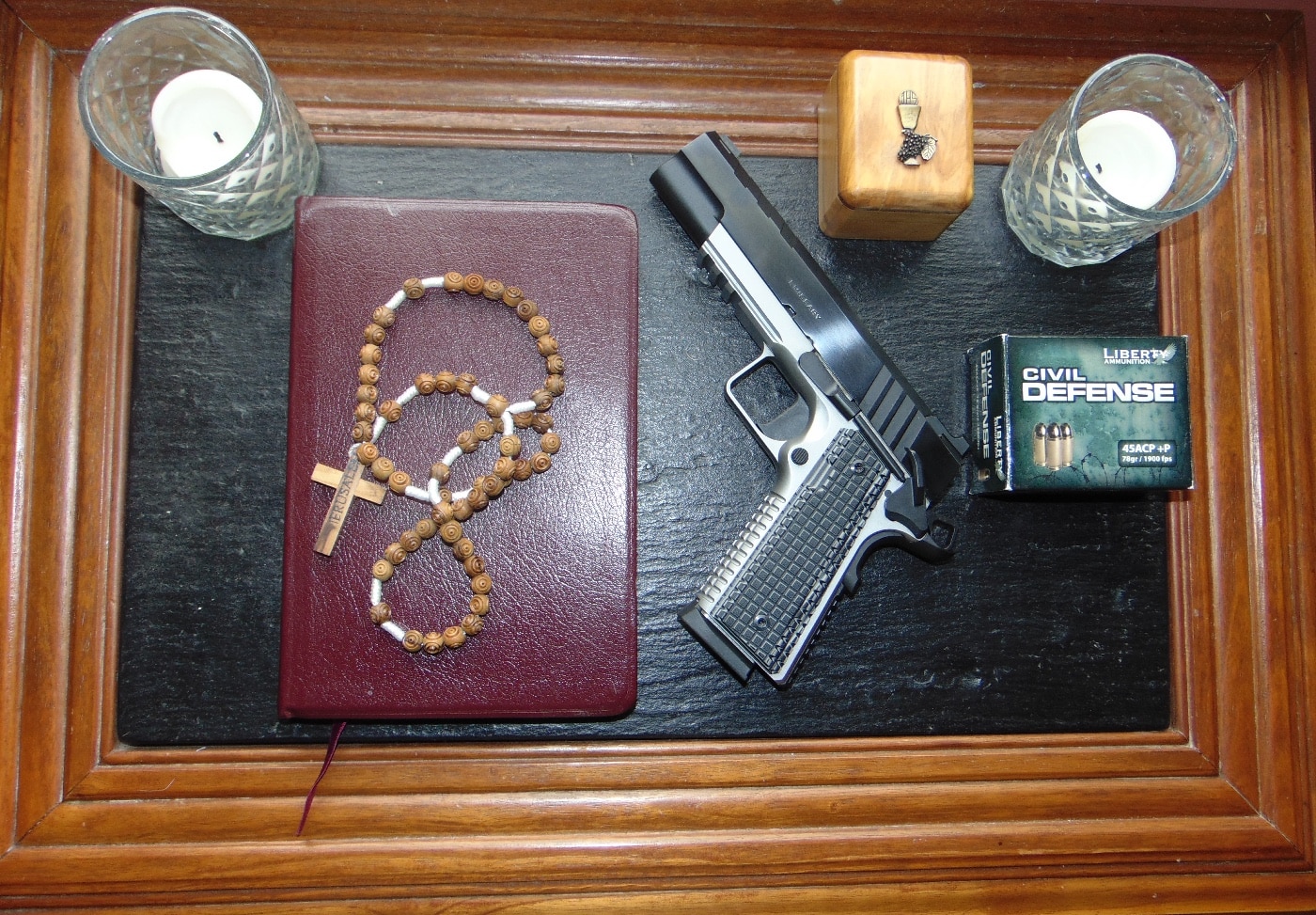
My Springfield SA-35 and my personal .45 are stoked with Liberty Ammunition’s new Overwatch loads. Testing them on clay blocks showed they are capable of impressive damage, yet they are controllable and far less likely to over-penetrate than most conventional hollowpoints.
- Reliability. Your handgun needs to have “beyond reproach” reliability. It has got to send out rounds each and every time you pull the trigger without fail until it’s either time to reload or relax. You will likely only have one chance to resolve things — and hopefully, you will need only one shot. The three pistols I rotate for church security are all flawlessly reliable.
If your chosen handgun fulfills the parameters of PPR, you can be superbly confident of the handgun you are relying on to save lives in God’s house.
The Church Environment
Your church may have an operational plan of action in addition to a well-trained group of personnel, or they might hire off-duty police officers to form a visible primary line of defense. Just remember that if you aren’t part of the security team and decide to intervene, you may be at increased risk of being mistaken for one of the perpetrators.
An organized security team should have a properly marked uniform — or at least an identifying golf shirt. It would help keep the members safer, and also make outsiders realize that there is organized security on the premises. An active shooter prefers to attack the defenseless, so even one potentially armed person on the premises can reduce a shooter’s desire to engage.
It is also just as important that local law enforcement officers are aware that armed security personnel are on the premises. If you have a good relationship with area police officers, check in with them prior to the service if you can so they know who is on the detail on that particular day. It would be an excellent idea if you offered free coffee and donuts (seriously — for real) to local law enforcement to encourage them to stop by during and in-between services. Establish it as a law enforcement outreach program for your church.
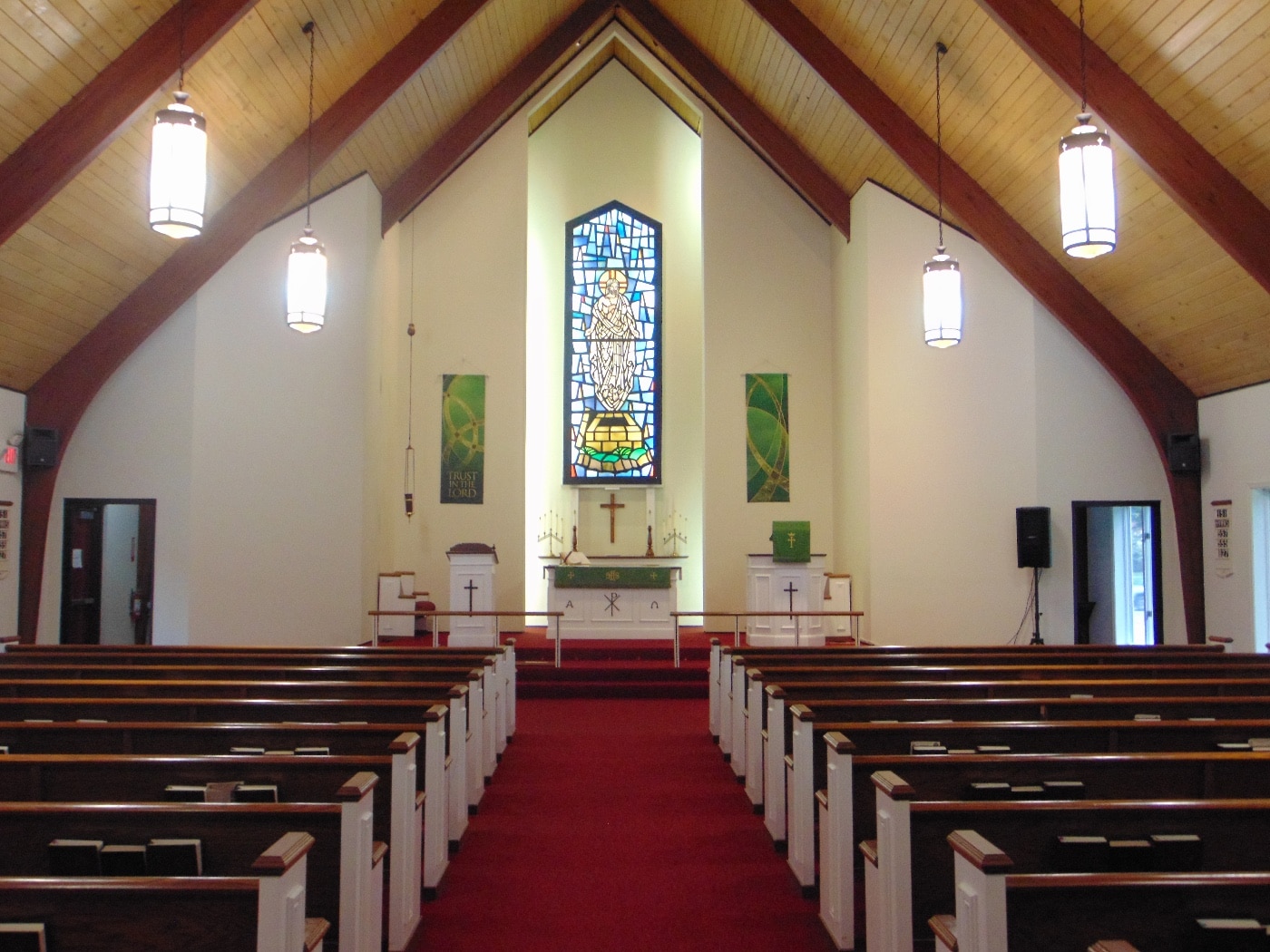
If you are a member of a smaller congregation, you may not have the luxury of an organized security team. I’ve served at our small congregation for three years or so, providing informal armed security. I dress in plainclothes — usually 5.11 button front shirts that cover my handgun, or sweaters and windshirts when the weather gets colder. Some of the people there don’t even realize I am armed. Our pastor is also normally armed as well.
Positioning
The position you take on church property depends upon the layout of your church — and how many doorways there are that lead into the sanctuary that could allow someone from the outside access to the inside. If you are working security alone, you can’t be everywhere at once. Assuming you consider the sanctuary to be the most vulnerable point of attack, then that is where you should make your stand. This is where I choose to make mine.
Being right-handed, I take my position toward the front on the right side — as you face the altar — rather than at the rear of the church. I sit right at the center aisle, with our son in the center and my wife on the right. I carry my handgun in an OWB holster located on my right hip. Our church has one entry point at the rear of the sanctuary.
If a disturbance unfolds, I am able to draw my sidearm without this action being visible to an assailant and roll out to my left into the center aisle, blocking access to the front as I bring my pistol to bear on the threat. If I were left-handed, I would position myself on the left side.
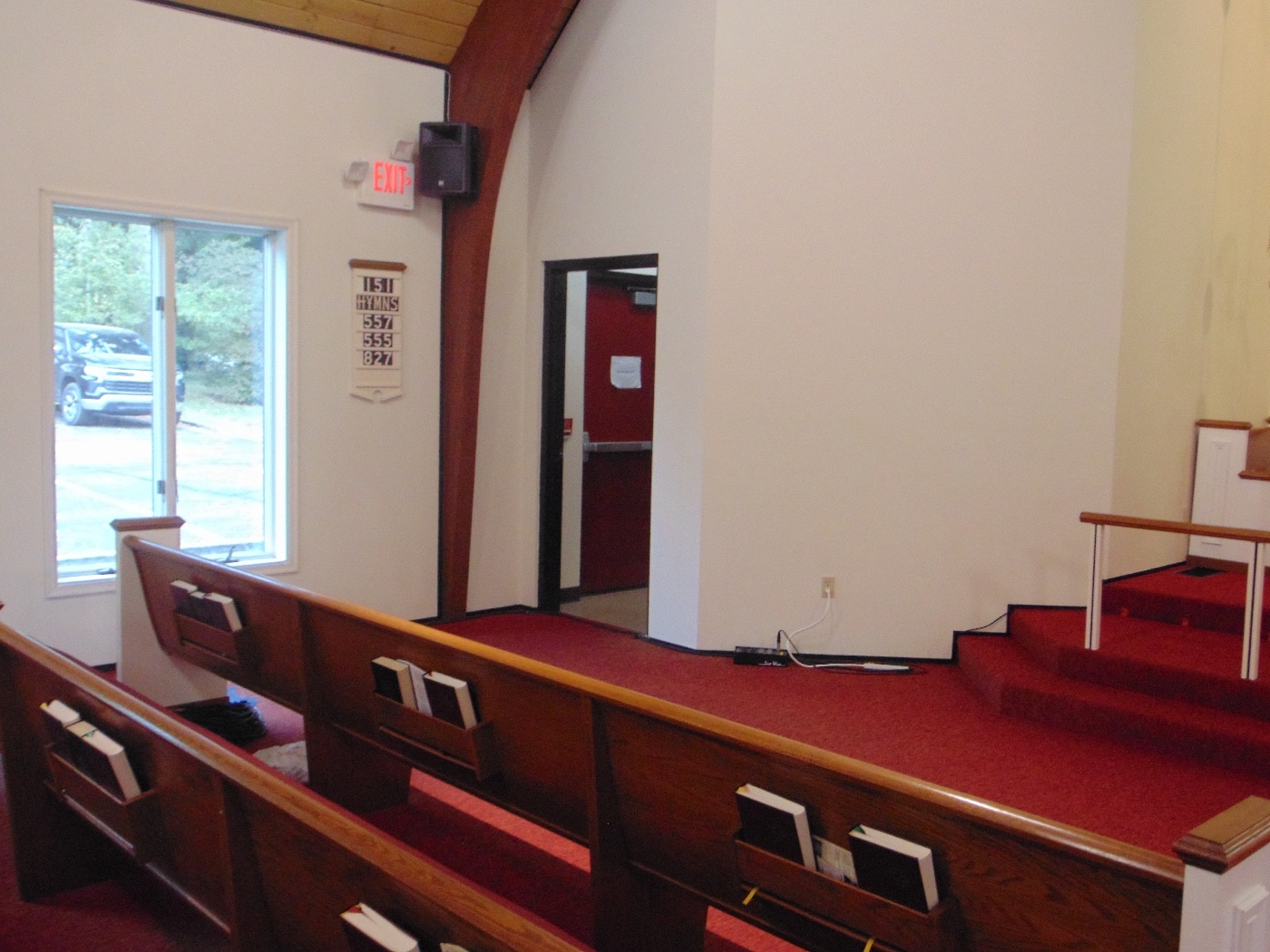
If this positioning away from that threat seems counter-intuitive, consider this. I believe the only time close in “at the door” positioning has a reasonable chance of working is if the security personnel are special duty law enforcement or contract security police. In recent church attacks, the central focus of the attacker has often been the pastor, priest or rabbi, who are positioned up front.
If you are providing voluntary security, your family must understand what your actions will be, and know what their actions should be because, at that moment, your focus must be on threat. If you are distracted by trying to take protective actions for them, the threat against the congregation will continue unabated.
My wife and son have long been trained to get down on the floor if such a threat should begin, so I know that I can act independently from them as I draw any fire towards me and away from them as I advance toward the threat.
Loud, repetitive, verbal commands are needed as you advance toward the target. However — unlike most law enforcement situations where the commands are directed to the suspect — the command of “GET DOWN” is directed at the congregation and other bystanders. This command is simple and helps get the innocent out of the paths of the bullets in an event like this.
Ballistic Shielding
When confronting an armed intruder, it would be beneficial to the responders to have ballistic protection or shielding when doing so. One way of protecting yourself would be to wear soft body armor during worship times. However, some would find doing that quite uncomfortable, particularly if you are an older defender.
There is an alternative that might be easier to work with — the Adept Armor Nova Steel Buckler Shield. A buckler is a small one hand shield that is referenced in several places in the Bible — particularly in Psalms — where certain protective aspects of God are described as a buckler. In the Middle Ages bucklers were carried in addition to the primary shield or sometimes carried alone. The buckler could be used in defense or offense.
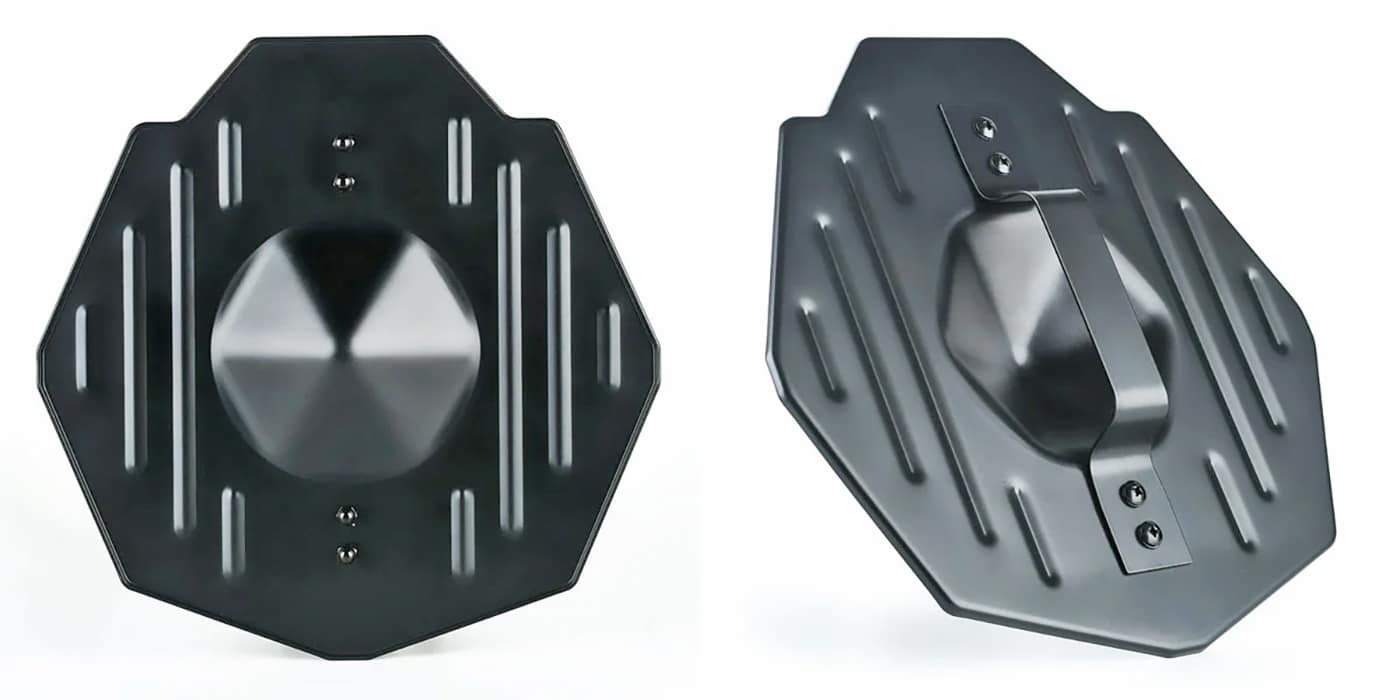
Adept Armor introduced the buckler concept to defenders in the 21st Century. Made of steel and weighing in at only 3 lbs. with a 12.2 inch diameter, the Nova Steel Buckler has a Level IIIA ballistic rating which means it will stop most factory 9mm on other handgun ammunition. IIIA is the rating for most concealable or external patrol armor used by uniformed law enforcement today.
The Nova Steel Buckler is designed to be held high with the weak hand where it can protect the lower part of the head and upper chest. While it doesn’t totally cover the torso, it affords more protection than a dress shirt. There are indentations on both upper corners of the shield that support the pistol in a firing position as you advance on the threat. The handle is steel and ambidextrous. I would prefer that the handle be formed from tubular steel rather than flat steel used. To protect my hand, I went to the hardware store and got a section of clear plastic tubing and fastened it in place with Gorilla Tape.
Besides being a handheld shield, the Nova Steel Buckler can be used as backpack armor in a sling pack and suspended across the chest if you want to keep both hands free. I prefer to keep the Nova Steel Buckler in a soft satchel case next to me in the pew, ready to be unzipped and deployed in a second or two. While a security team could keep one or two in a storage area if there is no one there to grab it when a situation unfolds, it won’t end up being deployed.
Besides being used in its ballistic capacity, its central cone would be effective in helping to pin a disturbed intruder to the ground with two hands holding the grip sideways and applying force downward until compliance is gained. The Adept Armor Nova Steel Buckler is one of the least expensive ballistic protection options available with a MSRP of only $195.
The MOST Important Thing…
All the above is important, but what I am about to say is more important than anything else. If you are going to take part in armed Church Security at ANY level, you must be willing to act. If the armed suspect you are confronting isn’t in the process of surrendering to you by throwing their gun — especially if they’ve shot someone — you will need to act. If you can’t accept this reality, you should not be involved in armed security.
Wrap Up
This is serious business with a much higher amount of variables involved than you may have initially considered. It is not something to enter into lightly. Unfortunately, It is also something that cannot be ignored. Simply hoping this type of evil never darkens your congregation’s doorstep is not a viable option. Are you prepared?
Editor’s Note: Please be sure to check out The Armory Life Forum, where you can comment about our daily articles, as well as just talk guns and gear. Click the “Go To Forum Thread” link below to jump in!
Join the Discussion
Continue Reading
Did you enjoy this article?

 103
103





